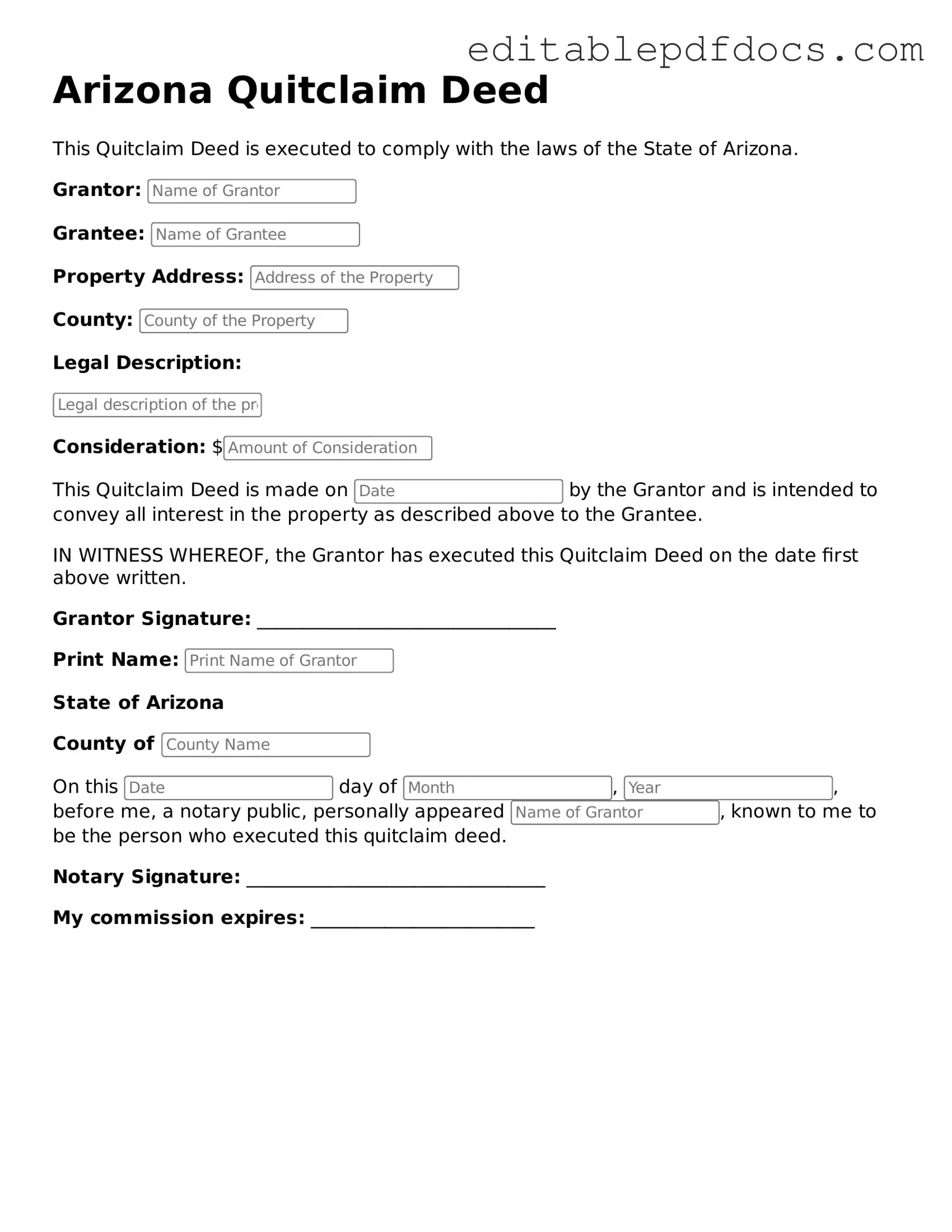When filling out the Arizona Quitclaim Deed form, individuals often make several common mistakes that can lead to complications in property transfer. One frequent error is failing to accurately identify the grantor and grantee. The grantor is the person transferring the property, while the grantee is the person receiving it. If the names are misspelled or incomplete, it could create confusion or legal issues down the line.
Another mistake involves not providing the correct legal description of the property. A legal description is a precise way of describing a piece of real estate, typically including details like lot number, block number, and subdivision name. Omitting this information or using vague descriptions can result in disputes over property boundaries and ownership.
People also sometimes overlook the requirement for notarization. In Arizona, a Quitclaim Deed must be signed in the presence of a notary public. If the document is not notarized, it may not be considered valid, which means the transfer of ownership could be challenged or deemed ineffective.
Additionally, individuals may forget to include the date of the transfer. This date is important as it establishes when the property officially changes hands. Without it, there could be uncertainty regarding the timing of ownership, which can complicate future transactions or legal matters.
Another common oversight is failing to pay the appropriate transfer tax. Arizona requires a tax to be paid when property is transferred, and neglecting this obligation can lead to penalties or delays in the recording process. It is crucial to check with local authorities to ensure compliance with tax regulations.
Lastly, some individuals do not record the Quitclaim Deed with the county recorder's office after it has been completed and notarized. Recording the deed is essential for making the transfer public and protecting the grantee's rights. If the deed is not recorded, the grantee may face difficulties in proving ownership in the future.
